
Right to Relief
Communities
Speak Out
Cambodia's microfinance over-indebtedness crisis is leading to human rights abuses. In 2020, the average microloan in Cambodia was $4,280 – the largest in the world. The average microloan was larger than 95% of Cambodians' incomes. There were 2.8 million microloans held across the country's 3.6 million households.
Desperate borrowers face immense pressure to repay these loans, many of which are collateralised with borrowers’ land titles. This project features the experiences of 14 communities who are affected by microloan debt and land conflicts. Click on the map below to read their stories, or read more about who we are and why we did this project.
Click on any of the filters in the box below to find out which communities are facing these problems.
Filter by unethical behaviours of credit officers
Aggressive collection practices • Pressured land sales • Threats • Encouraged use of private lenders • Fraud
Filter by negative consequences of microloans
Borrowing from private lenders • Eating less food • Selling possessions • Land sales • Child labour • Migration
Filter by reasons for borrowing
Repaying other debt • Healthcare • Building a house • Agriculture • Child's education
Click on community markers on the map to view their full profiles.
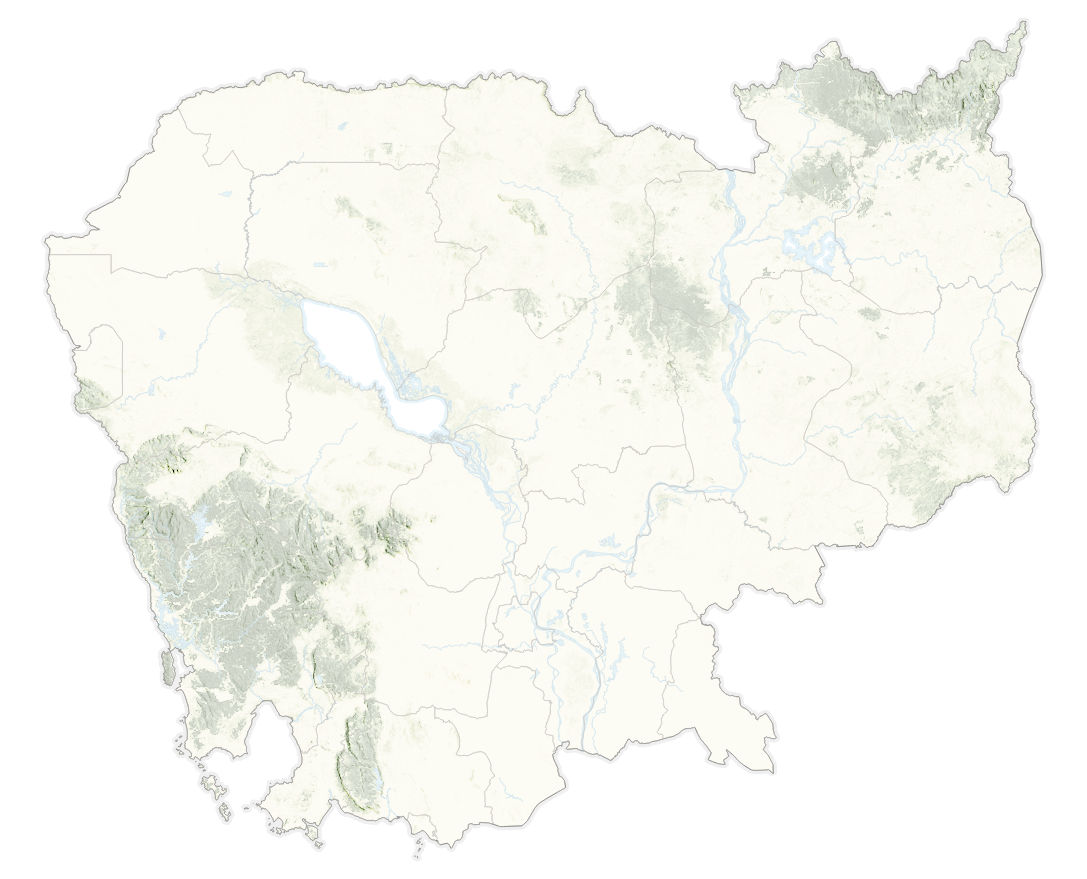
Number of Families
50
Start of Land Conflict
2011
Percent of Families with MFI Debt
90%
Average Loan Size
$1,500 USD
Sources of Income
Agriculture • Day labourer • Garment worker • Migration • Construction worker • Animal husbandry
Many of the families in the Dok Por community moved to the area prior to the Khmer Rouge regime. Community members began growing corn, cassava, fruit and rice, and harvesting non-timber forest products (NTFP) such as vegetables and fish from the forest and stream nearby. But a company owned by ruling party Senator Ly Yong Phat seized their land, and pollution from its operations made the stream unusable. The effects of this land conflict, coupled with heavy debt, have led many community members to migrate for work. More than 60% of families have at least one member working in a factory.
In 2011, Phnom Penh Sugar Company cleared the community’s farmland and destroyed many community members’ crops. Most people lost between 1 and 5 hectares of farmland to the company, and much of the communally used land – land around a stream and lake where villagers would collect NTFP – has been heavily polluted. Since then, community members have advocated through local authorities, the Senate and National Assembly, and several ministries, as well as the Anti-Corruption Unit, to seek justice and fair compensation. Despite promises to address their problem, there is still no solution.
Quotes from the community
Known microloan lenders in community
Reasons for Borrowing
Agriculture • Build a house • Business • Buy land • Child’s education • Healthcare • Repay other debt
Community members said debt levels in the village was “overwhelming”, and an estimated 90% of families have borrowed a microloan. Borrowers said they feel the burden of this debt and the intense pressure from credit officers, which has manifested in debt-driven land sales, migration, child labour, and predatory practices from credit officers. Most borrowers can’t read or write Khmer and don’t fully understand the terms and conditions of these loans. MFI credit officers did not offer the option of restructuring loans or delaying payments during the Covid-19 pandemic. In some cases, credit officers told borrowers that restructuring a loan would instead increase their overall debt burden and not be helpful.
Van Vouen, Dok Por community representative
Unethical Behaviours of Credit Officers
Aggressive collection practices • Keep land titles after repayment • Pressured land sales • Aggressive lending practices
Negative Consequences of Microloans
Additional work • Borrow from private lenders • Child labour • Children leave school • Eat less food • Family tensions • Land sales • Migration • Sell possessions
Microloan providers and their international investors, including many of Europe’s and the United States’ largest development banks, have a moral obligation to address human rights abuses and provide proper remedy and redress. Cambodian borrowers must have the right to relief, or else they will continue to face debt-driven hunger, child labour, migration, coerced land sales, and many other human rights abuses raised as part of this project.
Equitable Cambodia (EC) and the Cambodian League for the Promotion and Defense of Human Rights (LICADHO) are human rights NGOs registered in Cambodia. Both organisations are dedicated to amplifying the voices of grassroots communities and highlighting human rights abuses perpetrated by private and public actors in Cambodia.
This project is based on the principles of community-based research, where community members play an active role in producing knowledge and act as co-researchers. Information was gathered from both focus-group discussions with community members as well as individual interviews. All the information in this report comes from discussions with community members and was verified with community representatives. This project is not meant as the only true source of information about microloans, but rather is meant to accurately reflect the lived experiences of community members. Many of these issues have been raised before in previous reports issued by human rights NGOs in Cambodia.
Many Cambodians are drowning in microloan debt, which is leading to drastic and serious human rights violations across the country, and many people are suffering in silence. To quote one community representative who participated in this project: “I’m happy that our sadness is finally being publicised. We have kept it hidden for so long. The way [the MFIs] act is the opposite of the way they speak. Debt is the biggest problem faced by communities across the country.”
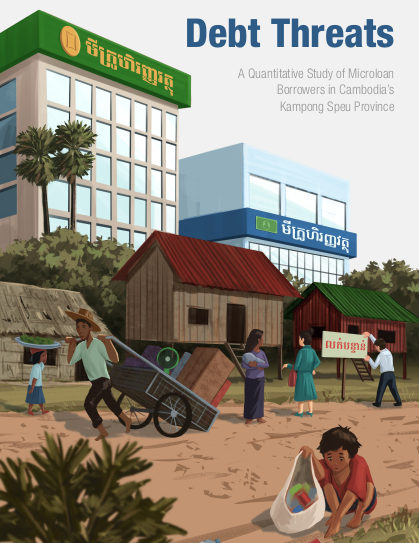
Debt Threats: A Quantitative Study of Microloan Borrowers in Cambodia’s Kampong Speu Province
Released in August 2023
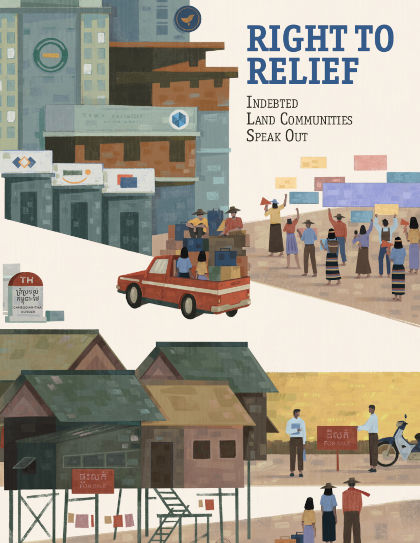
Right to Relief: Indebted Land Communities Speak Out
Released in June 2021
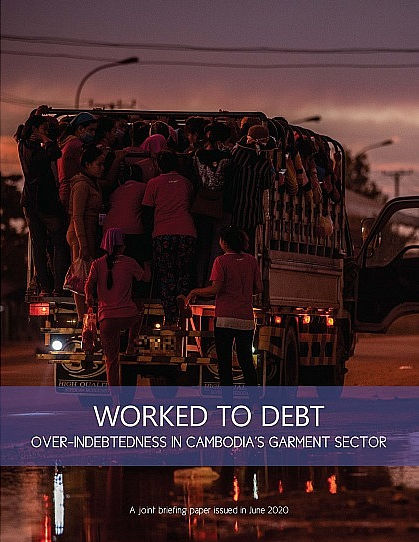
Worked to Debt: Over-Indebtedness in Cambodia's Garment Sector
Released in June 2020
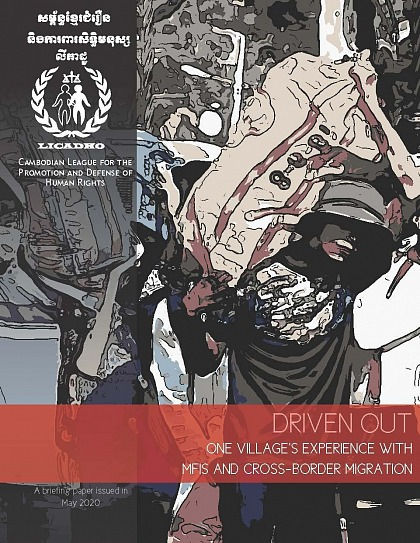
Driven Out: One Village's Experience with MFIs and Cross-Border Migration
Released in May 2020
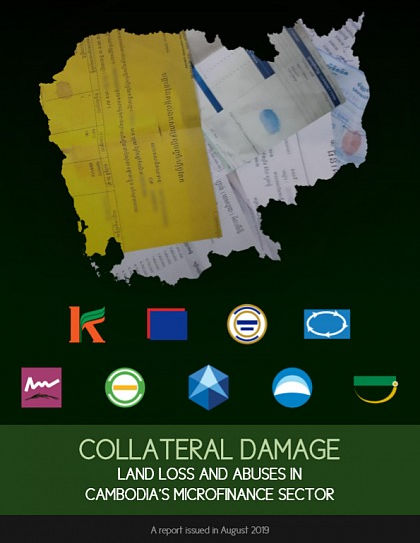
Collateral Damage: Land Loss and Abuses in Cambodia's Microfinance Sector
Released in August 2019